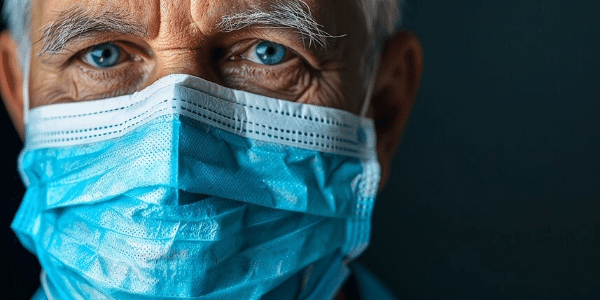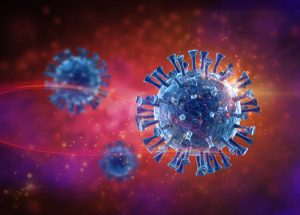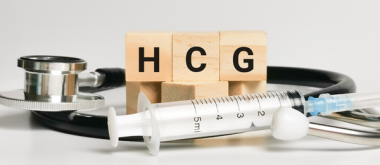A new study has provided important information on how a patient’s testosterone level can help protect them from severe COVID-19. Now, the expert on the finger quotient, Professor John Manning from the Applied Sport Science, Technology, Exercise and Medicine (A-STEM) research team, together with colleagues in Poland and Sweden, has taken a closer look at the topic. The results, published in the journal Andrology, could have significant implications for public health and future treatments.
Testosterone As a Protection Against Severe Covid-19
Professor Manning said: ‘Covid-19 varies considerably in severity between nations and between individuals. It is most severe in older men. This has led to speculation that testosterone may affect severity. However, it is unclear whether testosterone increases or decreases severity.’ In collaboration with colleagues in Poland and Sweden, the researchers looked at testosterone-dependent finger patterns in hospitalised patients compared to control subjects. He stated that there are two opposing explanations – the androgen-poor and the androgen-rich theory. The first theory is that high testosterone levels favour infection by the virus, while the second is that it is low testosterone levels in older men that increase their inflammatory immune response to Covid, leading to a poor prognosis. For the study, the team examined sex differences in relative finger length in hospitalised patients and control subjects.
Sex differences in relative finger length are thought to be due to exposure to testosterone and/or estrogen in utero or at puberty. Long index fingers are thought to be associated with low testosterone/high estrogen levels and long little fingers with high testosterone/low estrogen levels. The study, conducted at the Medical University of Lodz in Poland, looked at two samples taken before and after vaccinations were widely available. In both samples, hospitalised patients had short little fingers compared to control subjects. Professor Manning said: ‘Patients had finger ratios suggestive of low testosterone levels before and after birth. The pattern was present at the start of the pandemic and after widespread vaccination.’ This suggests that testosterone protects against severe Covid-19. The effect could be due to the hormone reducing inflammation in the lungs and other organs.
Male Hormone Levels
The impact of testosterone levels on the progression of a coronavirus infection has already been shown by earlier research, which found that in men, low testosterone levels in the blood are associated with a more severe progression of COVID-19. A study by Washington University School of Medicine challenges the popular belief that higher testosterone levels might explain why men, on average, develop more severe cases of COVID-19 than women. If a man had low testosterone when he was admitted to the hospital, his risk of developing severe COVID-19 – that is, his risk of needing intensive care or dying – was much higher than for men who had more circulating testosterone. And if testosterone levels dropped further during the hospital stay, the risk increased.
Researchers measured several hormones in blood samples from 90 men and 62 women who came to Barnes-Jewish Hospital with symptoms of COVID-19 and were confirmed to have the disease. For the 143 patients who were hospitalised, researchers measured hormone levels again on days 3, 7, 14 and 28, as long as the patients remained in the hospital over those periods. In addition to testosterone, the researchers measured the levels of estradiol, a form of estrogen produced by the body, and IGF-1, an important growth hormone that resembles insulin and plays a role in maintaining muscle mass.
The Lower the Testosterone Level, the More Severe the Disease
In women, the researchers found no correlation between hormone levels and disease severity. In men, only testosterone levels were associated with the severity of COVID-19. A blood testosterone level of 250 nanograms per decilitre or less is considered low in adult men. At hospital admission, men with severe COVID-19 had an average testosterone level of 53 nanograms per deciliter; men with less severe illness had an average level of 151 nanograms per deciliter. By day 3, the average testosterone level of the most severely ill men was only 19 nanograms per deciliter.
The lower the testosterone level, the more severe the illness. Those with the lowest testosterone levels in their blood had the highest risk of being placed on a ventilator, treated in the intensive care unit, or dying. During the course of the study, 37 patients died, including 25 men. The researchers noted that other factors known to increase the risk of severe COVID-19, including advanced age, obesity and diabetes, were also associated with lower testosterone levels. In addition, the researchers found that lower testosterone levels in men also correlated with a higher level of inflammation and increased activation of genes that enable the body to carry out the functions of circulating sex hormones in cells. In other words, the body may adapt to the testosterone deficiency in the bloodstream by increasing its ability to recognise and use the hormone. Researchers do not yet know the effects of this adaptation and call for further research.






